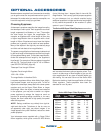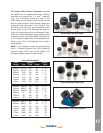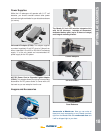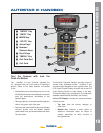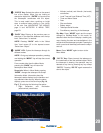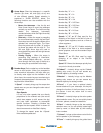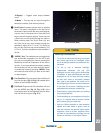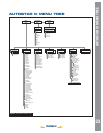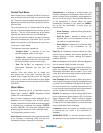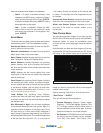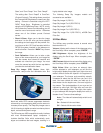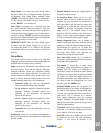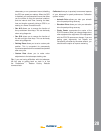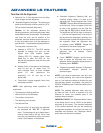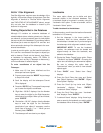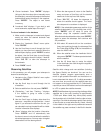
INDEX
Guided Tour Menu
When Guided Tours is selected, AutoStar III shows you
a list of theme tours that will help you explore the night
sky. These tours are pre programmed presentations of
objects that are visible for the user’s particular location,
time and date.
The most popular tour is “Tonight’s Best” that guides
the user to the best objects that are currently up in the
night sky. This tour is the easiest way to get started
exploring the cosmos with your new LS telescope.
Each tour will select the objects, present multi-media
clips about the object and, if you press “GoTo”, put that
object in the eyepiece of the telescope for you to view.
To exit a tour, press “Mode”.
The telescope comes pre-loaded with:
• “Tonight’s Best”, a selection of the most
interesting objects visible on any night.
• “A Star’s Life”, explains how stars are formed,
created, changes through their lives and fi nally
die using examples that are visible tonight.
• “How Far is Far”, an explanation of the
phenomenal distances you can see with
your LS.
AutoStar Suite also allows you to create your
own guided tours of the skies, including your own
objects, titles, images and sound fi les (for complete
instructions on how to use the authoring tools please
refer to the reference manual included on the AutoStar
Suite DVD).
Object Menu
Almost all observing with LS is performed using the
Object menu category. (NOTE: Exceptions include
Guided Tour and Landmarks).
Many LS menu categories contain databases. An LS
database is a list of objects, such as stars, planets,
comets, nebulae and so forth. When one of these objects
is selected from a database by pressing “ENTER”
and then “GO TO”, LS moves your telescope (when
properly aligned) and points it at the selected object.
The Object Menu options include:
Solar System is a database of the eight planets (Earth
is not included) in ascending orbits from the Sun,
followed by the Moon, asteroids, and comets.
Constellation is a database of all 88 Northern and
Southern Hemisphere constellations. When this menu
option is chosen and a constellation name appears on
the fi rst line of the screen, the multimedia description
of the constellation is played. When the media
presentation completes, or you press the “MEDIA”
key to halt the presentation, a menu gives you
three choices:
• Show Summary – presents the key data about
the constellation.
• Walk the Stars – presents a catalog of the
brightest stars in the constellation so that you
can walk the constellation fi gure.
• Show Objects – presents a list of the best deep
sky objects in this constellation for you
to explore.
Deep Sky is a database of objects outside our Solar
System such as nebulae, star clusters, galaxies, and
quasars grouped in various catalogs like Messier,
Caldwell and NGC.
Star is a database of stars listed in different categories
such as named, double, variable, or nearby.
Important Note: When you are looking at descriptive
object text, pressing “ENTER” will synchronize the
telescope’s coordinates with the object. This is most
useful when synching on bright stars to achieve better
pointing in the vicinity of the star.
User Catalogs allows the user to defi ne and store in
memory deep-sky objects of specifi c interest that are not
currently in the LS database. See Appendix B, page 37
for more information (for complete instructions on how
to use the authoring tools please refer to the reference
manual included on the AutoStar Suite DVD).
Satellite is a database of Earth-orbiting objects such
as the International Space Station (ISS), the Hubble
Space Telescope (HST), Global Positioning System
(GPS) satellites, and geosynchronous orbit satellites.
In order to fi nd and track satellites, you must download
recent orbital data into the telescope.
Landmarks stores the location of terrestrial points
of interest that you create in the permanent LS
database.
IMPORTANT NOTE: To use the Landmark function,
the telescope must be located and aligned exactly as
AUTOSTAR III MENU OPTIONS
24



